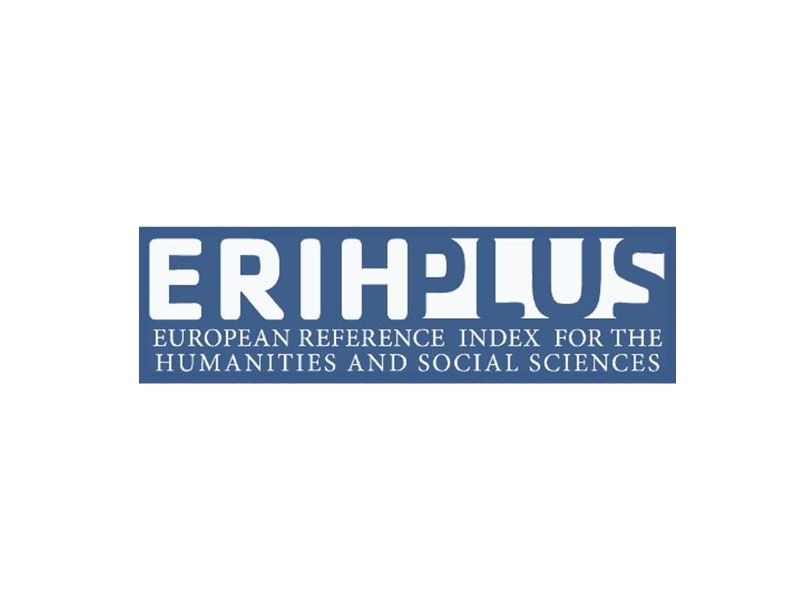Sonorous Deserts: Schizoanalysis, Sound Studies, and Inhuman Ecology
Abstract
The article investigates the impact of the work of Gilles Deleuze and Félix Guattari on contemporary sound studies and proposes a revision of the schizoanalytic project as a development of the field of sound studies relevant to its present conditions. Being driven by the inhuman and ecological tendencies in the humanities, sound studies are seeking sonic thinkingto be a pathway between reductionist materialism and phenomenological anthropocentrism. The author argues that the schizoanalytic approach, being a process philosophy of abstract machines, is capable of synthesizing material-informational and environmental-agential accounts of the sonorous contemporaneity. Discussing Havana Syndrome, Earth’s hum cases and the transition from electronic dance music (EDM) to intelligent dance music (IDM), he outlines the inhuman sonorous ecology that serves as a cartographic extension of sonic thinking.
References
Autechre (1994). Anti-EP. Warp Records —WAP54, Vinyl, 12", 33 ⅓ RPM, 45 RPM, EP.
Barthélémy, Jean-Hugues (2012). “Fifty Key Terms in the Works of Gilbert Simondon.” In Gilbert Simondon. Being and Technology, eds. Arne De Boever, Alex Murray, Jon Roffe, Ashley Woodward, 203–32. Edinburgh: Edinburgh University Press.
Bennett, David, and Claire Colebrook (2009). “The Sonorous, the Haptic and the Intensive.”New Formations 66: 68–81.
Bijsterveld, Karin (2019). SonicSkills. Listening for Knowledge in Science, Medicine and Engineering (1920s–Present). London: Palgrave Macmillan.
Bogue, Ronald (2003). Deleuze on Music, Painting, and the Arts. London: Routledge.
Bonnet, Francois (2016). The Order of Sounds. A Sonorous Archipelago. Falmouth, UK: Urbanomic Media Ltd.
Bos, Abraham P., and Ferwerda, Rein (2008). Aristotle, On the Life-Bearing Spirit: A Discussion with Plato and his Predecessors on pneuma as the Instrumental Body of the Soul. Leiden: Brill.
Cox, Christoph (2011). “Beyond Representation and Signification: Toward a Sonic Materialism.” Journal of Visual Culture 10(2): 145–61.
Deleuze, Gilles and Félix Guattari (1983). Anti-Oedipus: Capitalism and Schizophrenia [1972]. Trans. Robert Hurley, Mark Seem, and Helen R. Lane. Minneapolis: University of Minnesota Press.
Deleuze, Gilles, and Felix Guattari (1987). A Thousand Plateaus: Capitalism and Schizophrenia. Trans. Brian Massumi. Minneapolis: University of Minnesota Press.
Entous, Adam and Anderson, Jon Lee (2018). The Mystery of the Havana Syndrome. The New Yorker. https://www.newyorker.com/magazine/2018/11/19/the-mystery-of-the-havana-syndrome
Esch, Rudi, ed. (2016) Electri_City: the Düsseldorf School of Electronic Music. London: Omnibus Press.
Gerloff, Felix, and Sebastian Schwesinger (2017). “What Does It Mean to Think Sonically?” In Navigating Noise, eds. Nathania Van Dijk, Kerstin Ergenzinger, and Walther König, 168–90. Cologne: Walther König.
Golomb, Beatrice Alexandra (2018). Diplomats’ Mystery Illness and Pulsed. Neural Computation, Vol. 30, Issue 11. Cambridge, MA: MIT Press.
Goodman, Steve (2010). Sonic Warfare. Sound, Affect and the Ecology of Fear. Cambridge, MA: MIT Press.
Goodman, Steve (2012). “The Ontology of Vibrational Force.” In The Sound Studies Reader, ed. Jonathan Sterne, 70–72. London: Routledge.
Guattari, Félix (2013). Schizoanalytic Cartographies [1989]. London: Bloomsbury.
Helmreich, Stefan (2015). “Transduction.” In Keywords in Sound, eds. David Novak, Matt Sakakeeny), 222–31. Durham, NC: Duke University Press.
Herzogenrath, Bernd, ed. (2017). Sonic Thinking: A Media Philosophical Approach. London: Bloomsbury.
Hjelmslev, Louis (1963). Prolegomena to a Theory of Language [1943]. Madison: University of Wisconsin Press.
Kahn, Douglas (2013). Earth Sound Earth Signal: Energies and Earth Magnitude in the Arts. Berkeley: University of California Press.
Kane, Brian (2015). “Sound Studies without Auditory Culture: a Critique of the Ontological Turn.”Sound Studies 1:1: 2–21.
Kassabian, Anahid (2013). Ubiquitous Listening: Affect, Attention, and Distributed Subjectivity. Berkley: University of California Press.
Kotsopoulos, Nikos (2009). Krautrock. Cosmic Rock and Its Legacy. London: Black Dog Publishing.
LaBelle, Brandon (2010). Acoustic Territories: Sound Culture and Everyday Life. London: Continuum.
Lefebvre, Henry (2004). Rhythmanalysis: Space, Time and Everyday Life [1992]. London: Continuum.
Lyotard, Jean-François (1991). The Inhuman: Reflections on Time. Cambridge: Polity Press.
Mikkola, Anna (2016). “The Hum of the Earth: From Geomythology to Epistemological Leaps via Art (Draft for a Future Art Practise).” Design Ecologies 5.1: 34–45.
Morton, Timothy (2007). Ecology without Nature: Rethinking Environmental Aesthetics. Cambridge, MA: Harvard University Press.
Negarestani, Reza (2014). The Labor of the Inhuman, Part II. E-flux #53. https://www.e-flux.com/journal/53/59893/the-labor-of-the-inhuman-part-ii-the-inhuman/
Reynolds, Simon (2010). “The History of Our World: The Hardcore Continuum Debate.” Dancecult: Journal of Electronic Dance Music Culture 1(2): 69–76.
Safonov, Nikita (2019). “Viral Transduction: Toward a Question Concerning Technology of the Sonorous.” Moscow: New Literary Observer.
Schafer, Raymond Murray (1993). The Soundscape: Our Sonic Environment and the Tuning of the World. Rochester, VT: Destiny Books.
Schrimshaw, Will (2017). Immanence and Immersion: On the Acoustic Condition in Contemporary Art. London: Bloomsbury.
Schulze, Holger (2018). The Sonic Persona. An Anthropology of Sound. London: Bloomsbury.
Shannon, Claude (1948). “A Mathematical Theory of Communication.” The Bell System Technical Journal, 27: 379–423.
Sterne, Jonathan (2003). The Audible Past: Cultural Origins of Sound Reproduction. Durham, NC: Duke University Press.
Stubbs, Alexander L., and Fernando Montealegre (2019). “Recording of ‘Sonic Attacks’ on U.S. Diplomats in Cuba Spectrally Matches the Echoing Call of a Caribbean Cricket.” BioRxivhttps://www.biorxiv.org/content/10.1101/510834v1.article-info
Swanson, Randel L., Douglas H. Smith, et al (2018). “Neurological Manifestations Among US Government Personnel Reporting Directional Audible and Sensory Phenomena in Havana, Cuba.” JAMA 319.11: 1125–33. http://jamanetwork.com/journals/jama/fullarticle/10.1001/jama.2018.1742
Toop, David (1995). Ocean of Sound: Aether Talk, Ambient Sound and Imaginary Worlds. London: Serpent’s Tail.
Copyright (c) 2019 European University at Saint-Petersburg

This work is licensed under a Creative Commons Attribution 4.0 International License.







